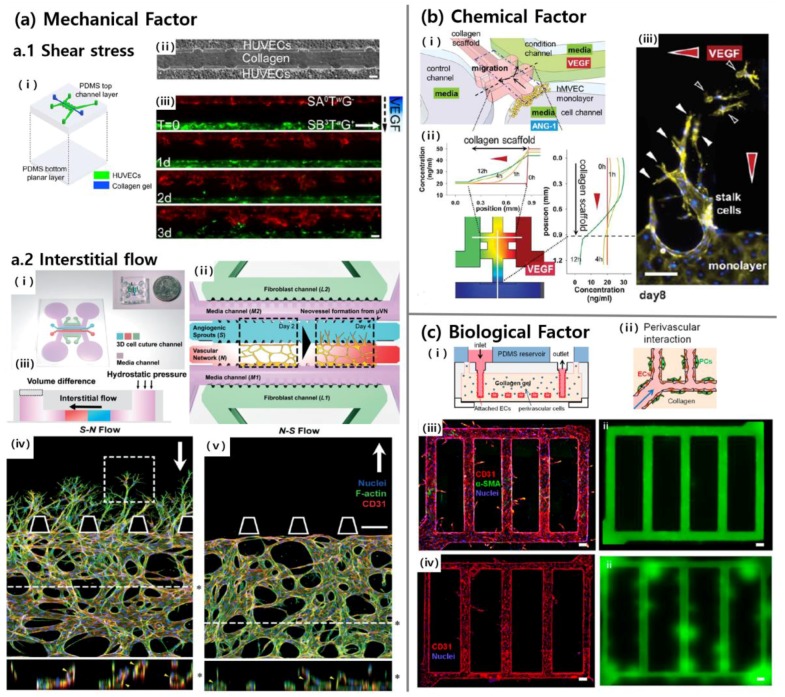Figure 2.
Three major factors (mechanical, chemical, and biological factors) in vessel formation on a chip. (a.1) Fluid flow was given by syringe pumps that were connected to reservoirs of the chip (i), which had one channel for collagen and two channels for human umbilical vein endothelial cells (HUVECs) (ii). Shear stress inhibited sprouting in the presence of interstitial flow and vascular endothelial growth factor (VEGF) gradient (iii) [12]. Scale bars 100 μm. (a.2) Angiogenic sprouting from the vascular network (i–ii) was observed in the presence of interstitial flow (iii). Sprouting was more active when the interstitial flow acts on sprouting in reverse direction (iv), than forward direction (v) [45]. Scale bar 200 μm. (b) The direction of sprouting could be guided along spatial VEGF gradient (iii) by forming two orthogonal gradient profiles on the gel region (i–ii) [21]. Scale bars 100 μm. (c) HUVECs were seeded on the hollow microchannels in the pericyte-embedded collagen gel (i) to generate stable vascular structures through heterotypic cell–cell interactions (ii). Pericytes (α-SMA, green) enclosed endothelial wall (CD31, red) and contributed to structural stability (iii) confirmed by perfusing of fluorescent microbeads (green). A number of leakages could be observed when only HUVECs were seeded (iv) [56]. Scale bars 100μm. Reproduced with permission.

